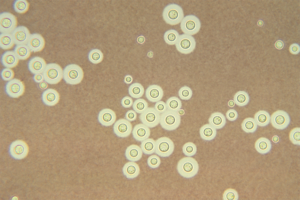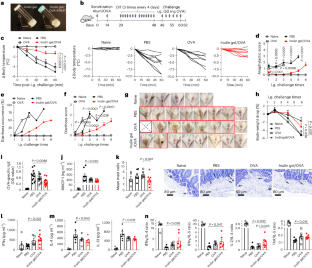2024-07-09 ワシントン大学セントルイス校

(Photo: Leanor Haley/CDC)
<関連情報>
- https://source.wustl.edu/2024/07/newly-idd-enzyme-helps-pathogenic-fungus-build-protective-cell-wall/
- https://www.pnas.org/doi/10.1073/pnas.2319707121
真菌のタンパク質は、グリコーゲンと細胞壁グルカンの両方を組織化する A fungal protein organizes both glycogen and cell wall glucans
Liza Loza and Tamara L. Doering
Proceedings of the National Academy of Sciences Published:May 14, 2024
DOI:https://doi.org/10.1073/pnas.2319707121
Significance
All cells store glucose as intracellular polymers that can be mobilized for energy as needed. Yeast additionally use large amounts of glucose to build their walls, a key structure that distinguishes them from other cell types and whose synthesis is a proven drug target in fungal pathogens. This investigation of two proteins in a pathogenic yeast demonstrated unexpected connections between internal glucose polymers and cell walls. Surprisingly, formation of the intracellular polymer glycogen is needed for synthesis of specific wall structures. Further, a newly characterized protein both organizes glycogen formation and influences cell wall glucan composition. These findings are important for fundamental biological understanding and potentially for improving human health.
Abstract
Glycogen is a glucose storage molecule composed of branched α-1,4-glucan chains, best known as an energy reserve that can be broken down to fuel central metabolism. Because fungal cells have a specialized need for glucose in building cell wall glucans, we investigated whether glycogen is used for this process. For these studies, we focused on the pathogenic yeast Cryptococcus neoformans, which causes ~150,000 deaths per year worldwide. We identified two proteins that influence formation of both glycogen and the cell wall: glycogenin (Glg1), which initiates glycogen synthesis, and a protein that we call Glucan organizing enzyme 1 (Goe1). We found that cells missing Glg1 lack α-1,4-glucan in their walls, indicating that this material is derived from glycogen. Without Goe1, glycogen rosettes are mislocalized and β-1,3-glucan in the cell wall is reduced. Altogether, our results provide mechanisms for a close association between glycogen and cell wall.


